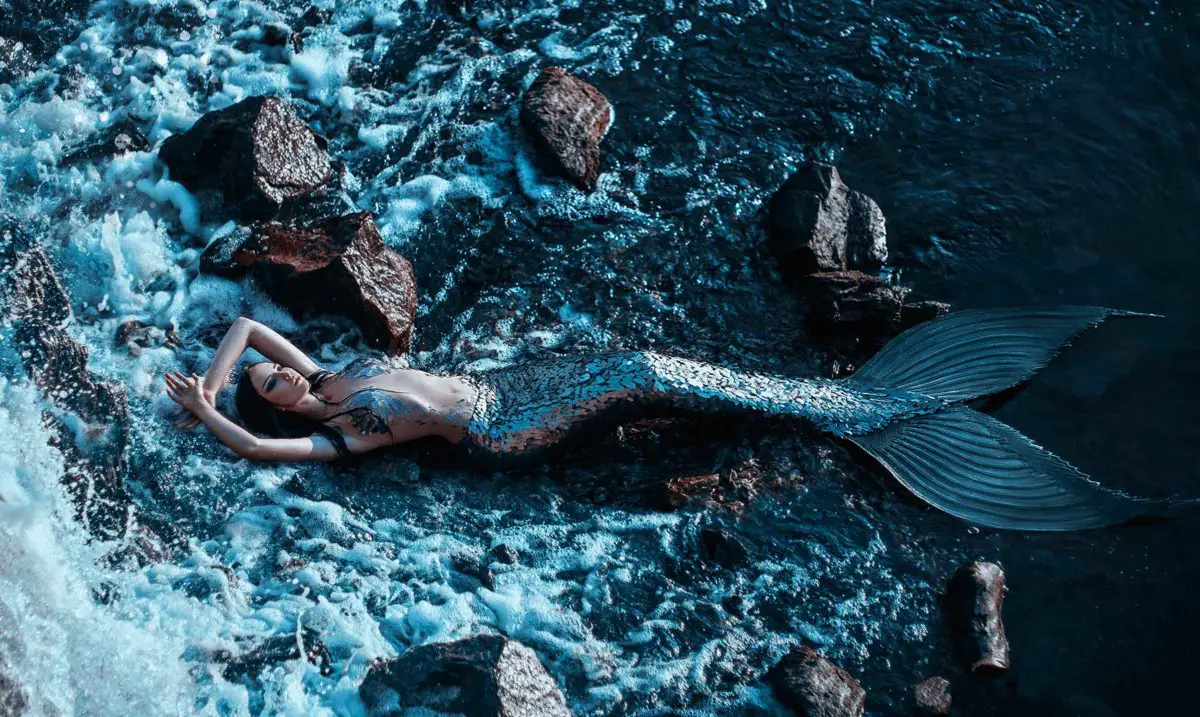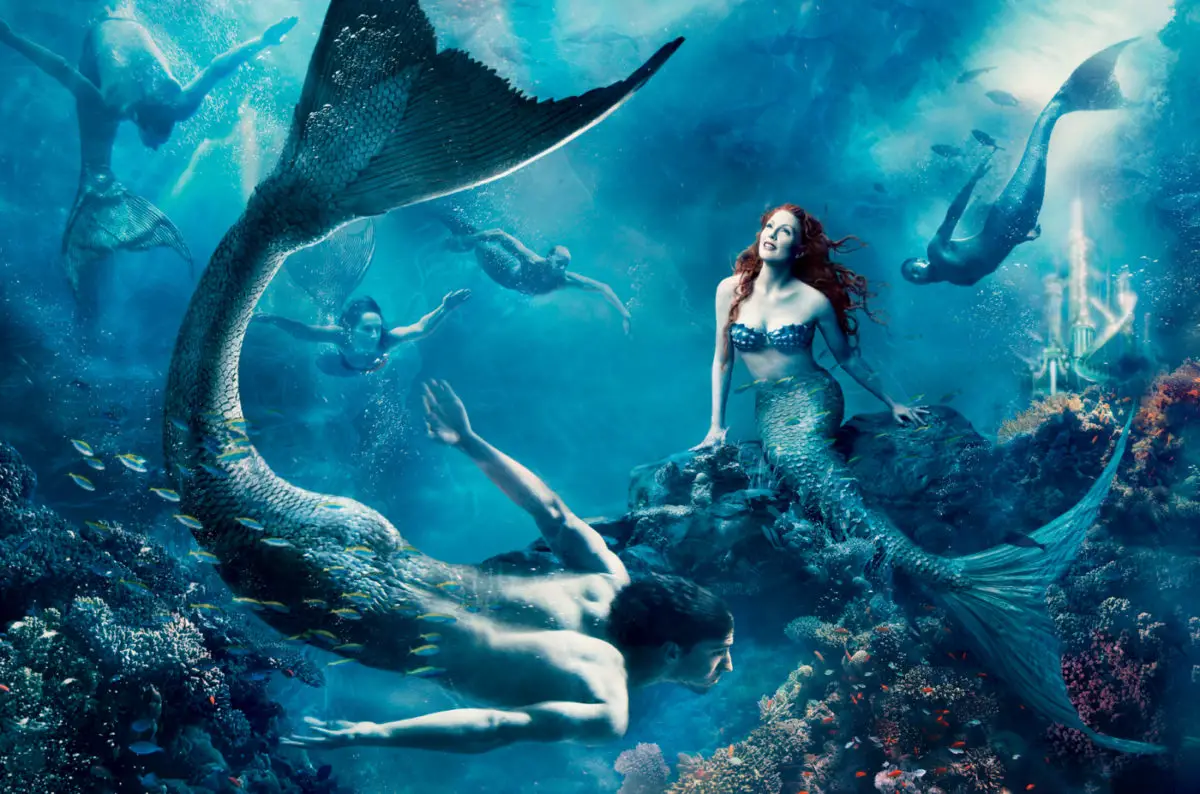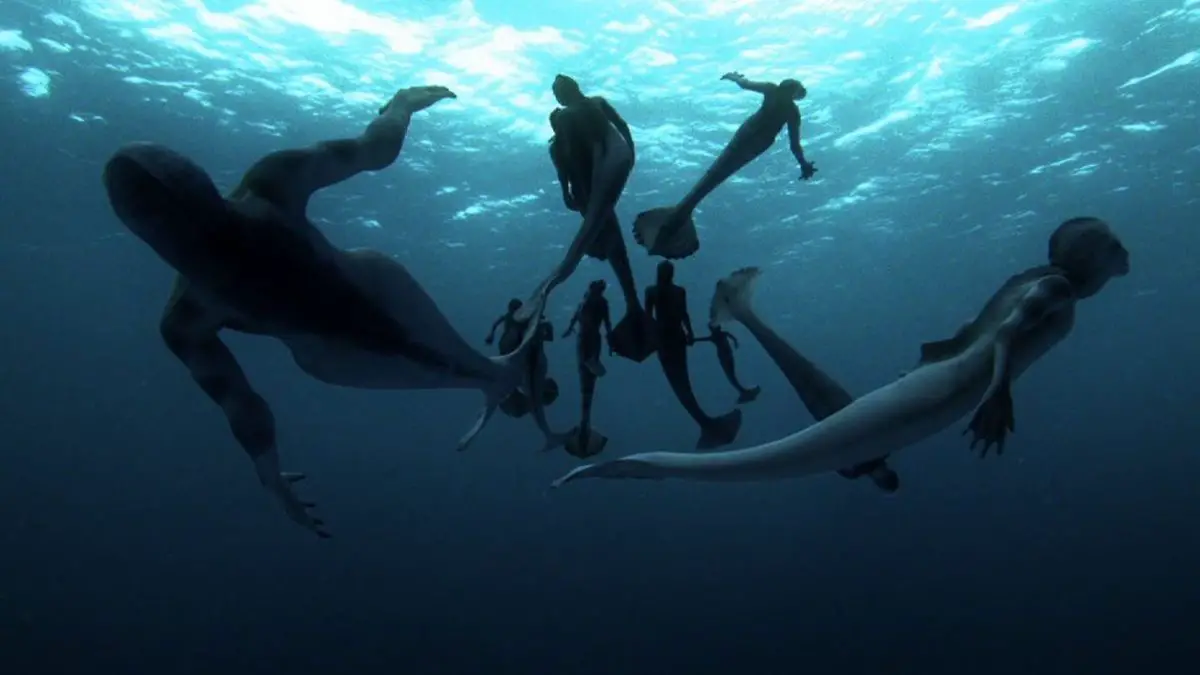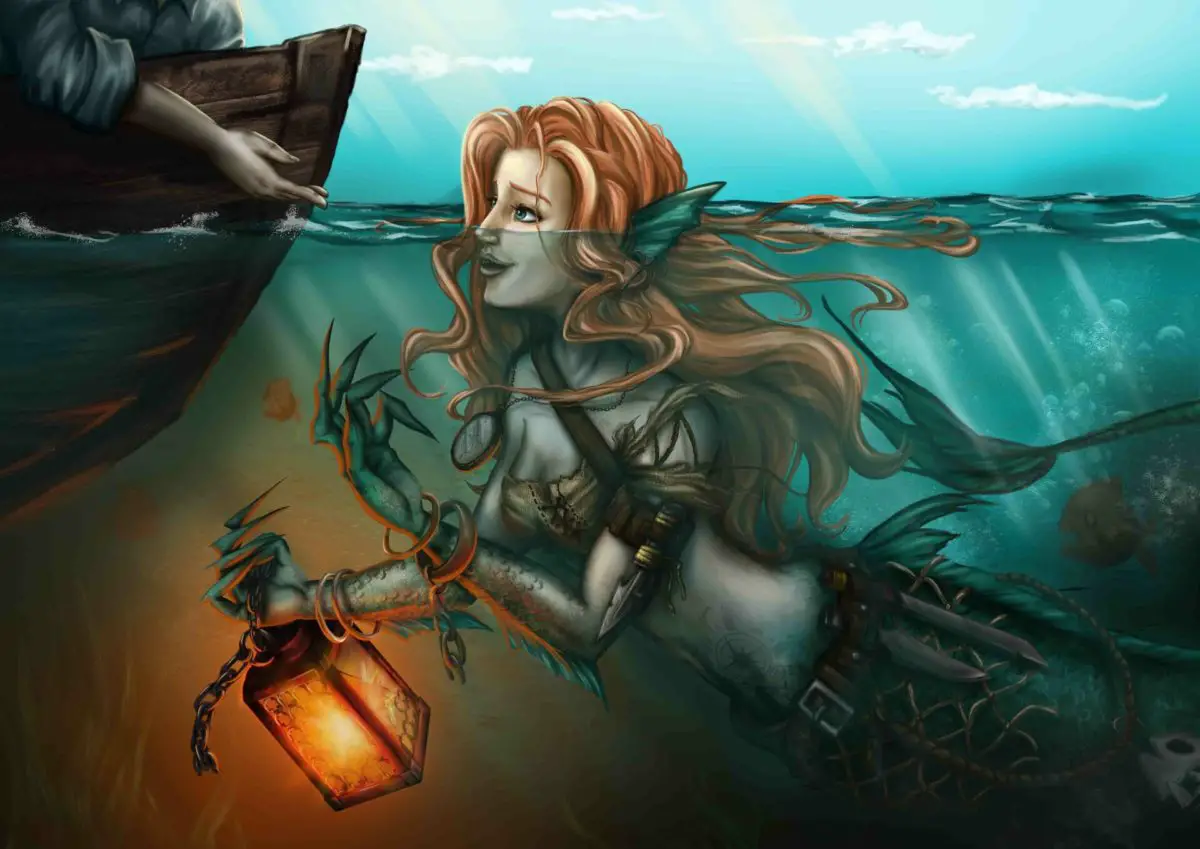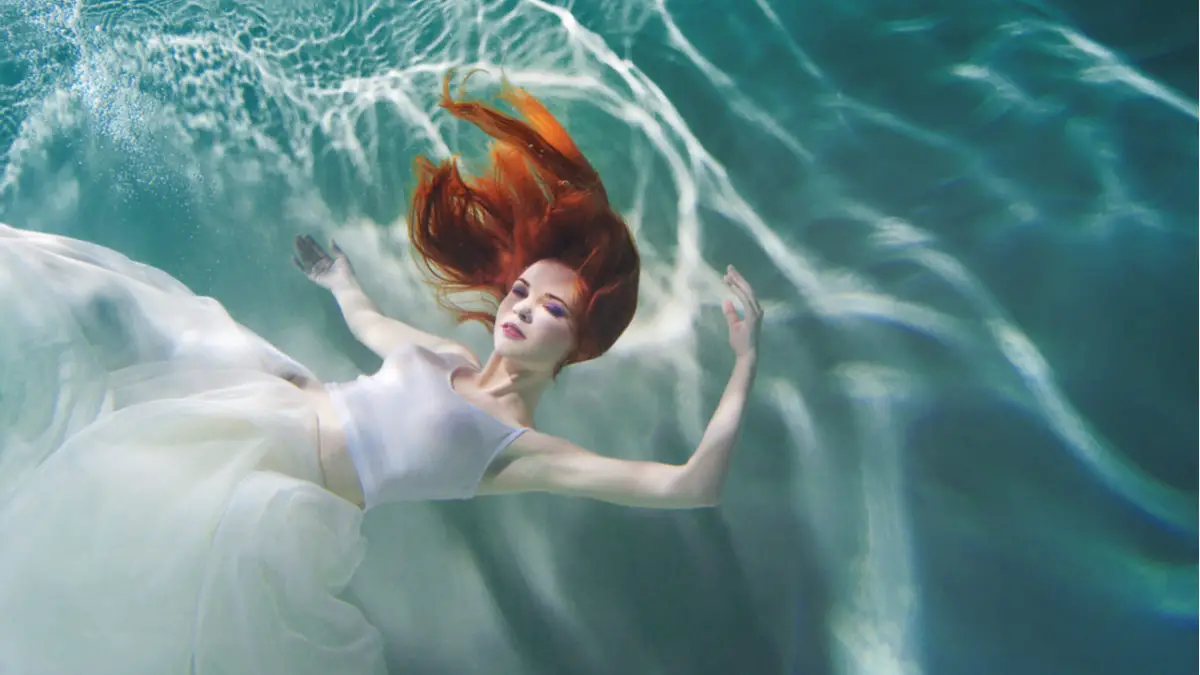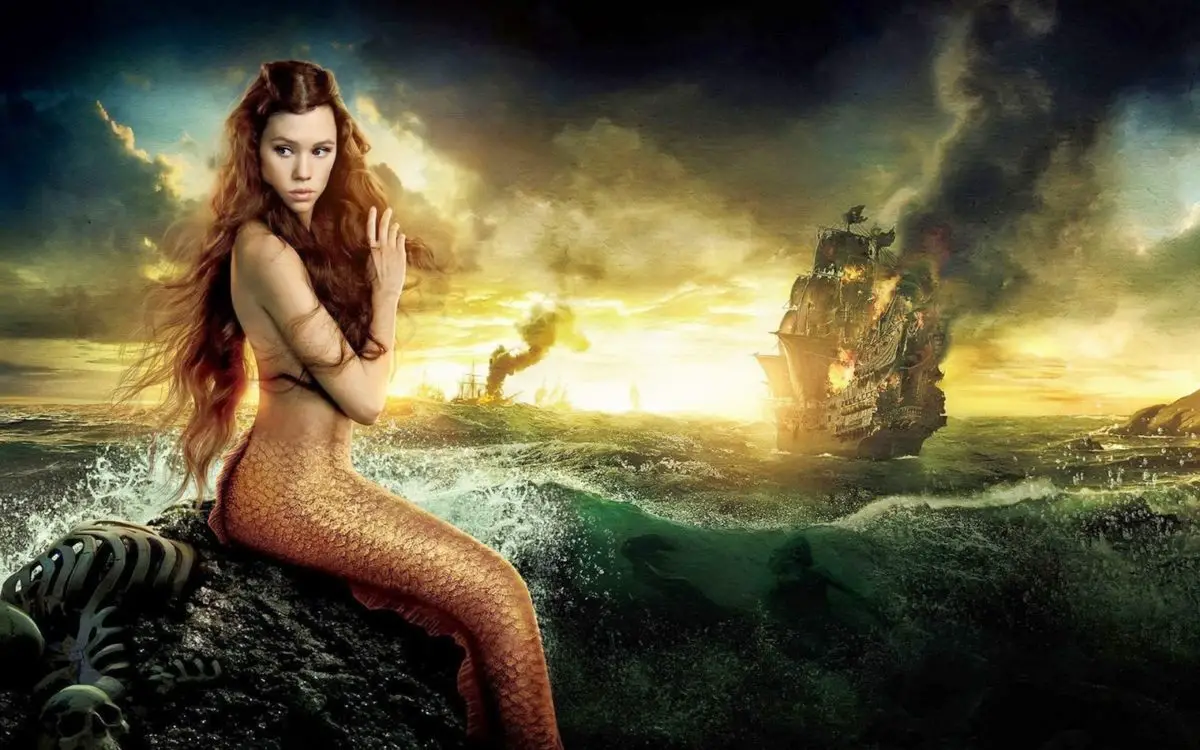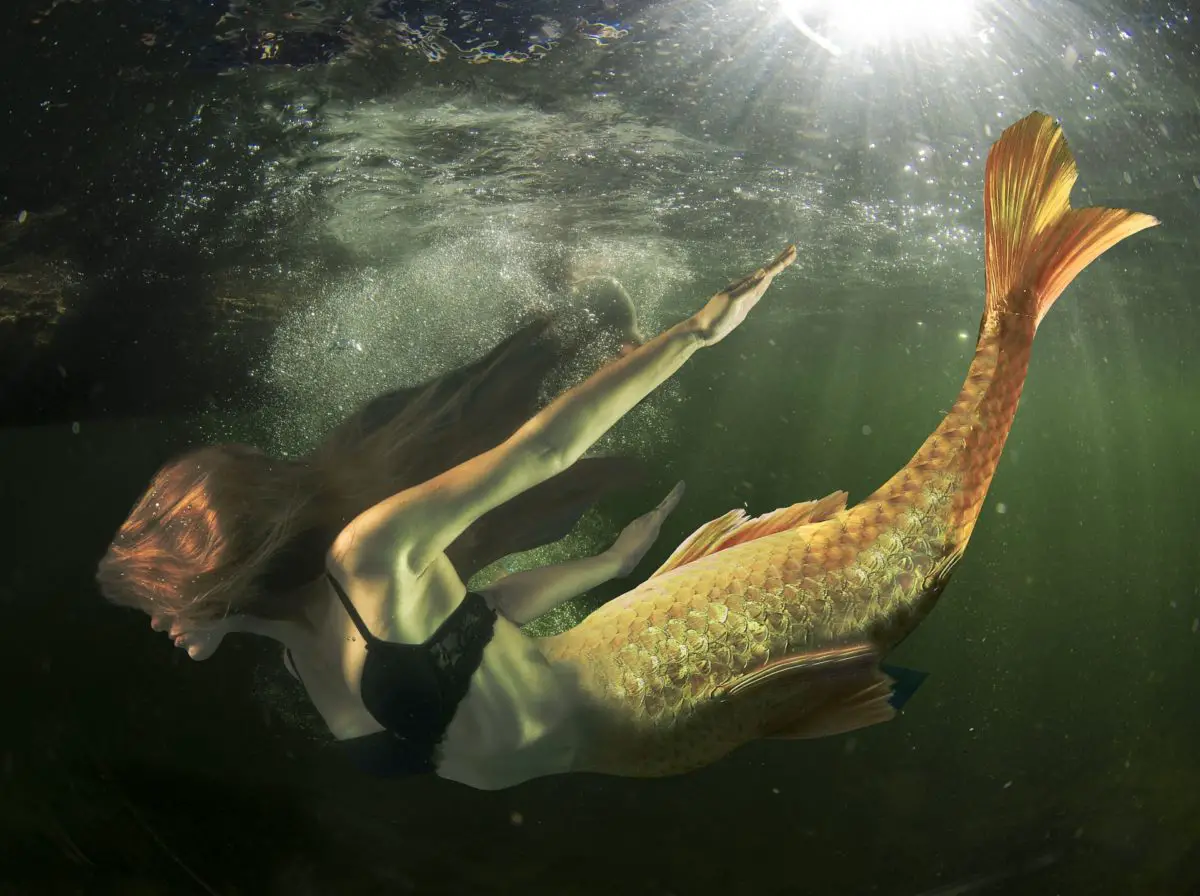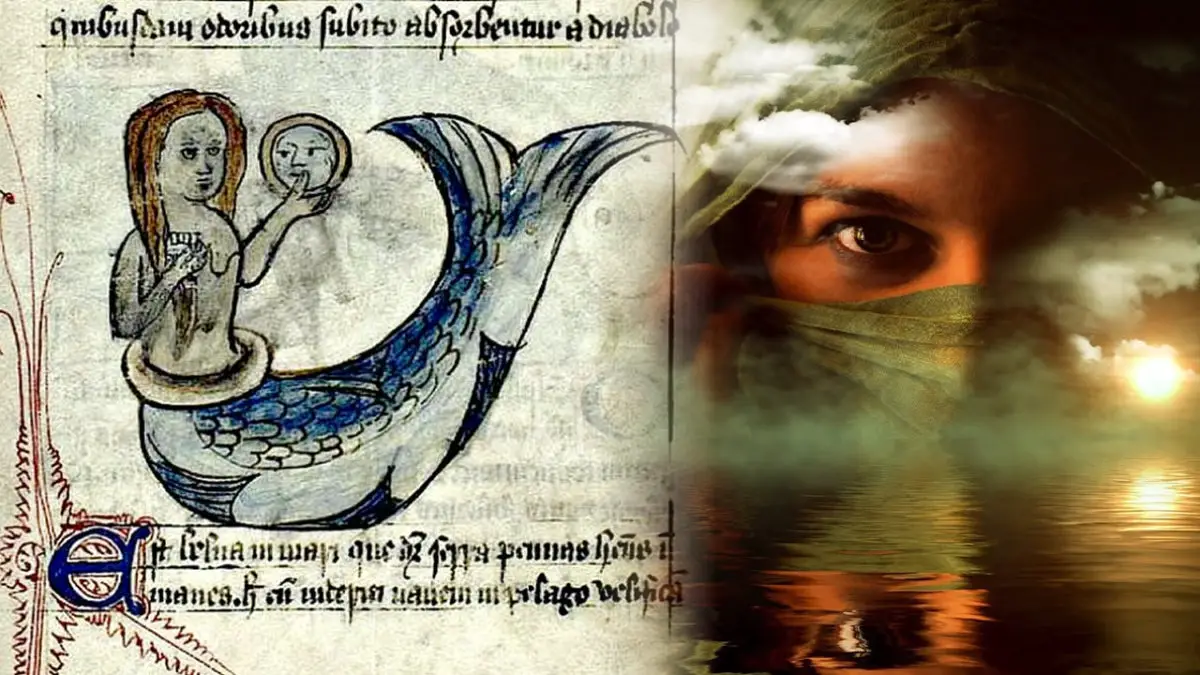Last Updated on October 4, 2023 by Hernan Gimenez
Mermaids are mythological creatures who, according to many stories or legends, are said to abound in the depths of the seas, many of which are part of the history of Greek, Roman and some other cultures, but …. are they really just a myth? A question we will try to answer in this interesting article.
Indice De Contenido
Introduction
Undoubtedly, many of us have grown up with the story of these wonderful creatures who, according to legend, live in the deep sea and whom more than one would like to meet.
Some scientists have called them aquatic humanoids, others have written books in which they range from monstrous to irresistibly beautiful, enchanting and capable of subduing any human into doing their bidding.
They have been depicted as bird-women in classical Greek ceramics or, in some contemporary versions, as decorations on funerary sculptures; others have been the subject of television series in which they are depicted as teenagers who grow tails when they get wet, as in the case of the well-known Australian series H2O.
The truth is that mermaids, as beautiful maidens with perfect bodies and bare breasts, as fairground attractions created as freaks, or as deformities presented as hybrids in a laboratory’s cabinet of curiosities, have never ceased to capture the interest and imagination of all humanity.
For this reason, they are the central theme of this article, which aims to dispel many of the doubts that exist in the minds of most people as to the possibility of the existence of such magnificent creatures. We invite you to discover a whole series of elements linked to the life of the so-called mermaids.
What Are Mermaids?
Mermaids are mythological sea creatures that are part of many legends of ancient cultures and beliefs of folkloric origin. They are usually classically depicted as hybrid creatures because their bodies are made up of parts of two different species; in this case with the torso and face of a woman, while the lower part of their body was made up of a tail.
In some cultures they were represented with the body of a bird, as in the case of Egyptian mythology, which inhabited a rocky island; but from the Middle Ages they began to be identified with the appearance of a fish. In any case, they had the peculiarity of having a melodious voice, which they used to attract and control sailors.
Some historians have suggested that these two types of appearance, presented to identify mermaids, make up the classic form of the woman-bird; but for many, the true mermaid must be endowed with a fish tail, known in English as a mermaid.
Throughout history, however, mermaids have usually been depicted with the female torso with the breasts uncovered or covered by long, beautiful hair, while from the waist down they were fish with a long, shapely tail.
Characteristics and Attractions
These fascinating mythical creatures have been the subject of countless tales, literary stories and traditions, such as one of their appearances in the famous Odyssey, a poem written by the famous Homer, who lived in the 8th century BC.
It tells how the hero known as Odysseus ordered all his sailors to cover their ears while crossing the sea, so as not to fall under the spell of the sirens’ song. While tied to the mast of the ship, Ulysses could appreciate the song, but could not let go to meet the sirens.
This is how the enormous influence of the mermaids on the will of men was made known. But this is not the only outstanding characteristic of the mermaids, so we will show you all the others in the following points:
- Hybrid beings with the upper part of their body of a woman, very well formed, with silky skin, tanned tone and abundant and long hair in greenish and bluish tones, similar to the algae of the seabed.
- The lower part of her body had a long tail with scales in shades of green and silver.
- With an average lifespan of over 150 years, they are very similar in size and weight to humans.
- They breathe under the sea, through the scales of their fish part, where their gills are located exactly on their sides. They have a pulmonary system that allows them to breathe out of the water.
- Like many other marine animals, they feed on algae, plankton and small fish, taking advantage of the displacement provided by their tail.
- They generally have blue eyes and are rarely seen by humans, at least from the front, so they are usually seen from a distance and with their backs turned so that their faces are not visible.
- They are somewhat shy, as when they feel someone approaching, they dive into the water and disappear into the depths. They are said to enjoy sitting on rocks, combing or washing their hair, or playing their guitar in the moonlight at night.
Let us take as an example a verse from a translation of the Bible which refers to the figure of mermaids.
“The mermaids are maidens of the sea who deceive sailors with their great beauty and the sweetness of their song; from head to navel they have the body of a virgin and a human form, but they have a scaly fish tail which they always hide in the sea”.
One element that stands out about them is that they tend to be ambiguous beings, as they could be seen as good or bad depending on the environment in which they were found or with whom they interacted; they used to be quite flirtatious, decorating their hair with shells and corals.
They were therefore considered to be full of attributes, as they could easily fall in love and give gifts to anyone they liked, giving them objects from the sea; on the other hand, they protected many fishermen, but prevented them from fishing too much so as not to exhaust the sea’s resources.
They exerted a hypnotic attraction on men, especially through their singing, and many of them would leave their beds at night to go out to sea to reach a mermaid.
Did they really exist?
Human beings have a way of believing in wondrous beings that we think can add charm to our lives; we echo stories that are spread as legends, with the certainty that many of them can be real, simply because they are part of the human imagination.
But scientists are in charge of verifying all phenomena that occur in nature, so verifiable physical evidence serves to give certainty to what the majority of people claim as reality.
This is the case, for example, with the existence of dinosaurs, which has already been scientifically proven by the discovery of a number of archaeological remains; but it is not the same with mermaids, and in this sense there is bad news for lovers of these fascinating mythological creatures.
The National Oceanographic Service of the United States published a statement in 2012 saying that “no evidence of the existence of aquatic humanoids has ever been found”, which means that sailors will no longer be able to succumb to their songs, since it has been scientifically proven that mermaids do not exist.
We know that many of the programmes broadcast by the media, such as the feature film “Mermaids: the body found” by the Animal Planet channel, could lead people to believe that it was indeed a real mermaid; but this has now been denied by the US National Oceanic and Atmospheric Administration (NOAA).
However, one of their researchers, Paul Robertson, took the opportunity to make a documentary called “Mermaids: the new evidence”, which apparently showed evidence of real mermaids, with sounds that seemed to be whale sounds, but where the bodies of a new species were presented.
Many people are still wondering whether these are mermaids or not, as it is known that some researchers have discovered new species in the sea, whose body parts have been analysed and found strange pelvic bones, as well as hand fins and hips similar to an upright animal.
It is said that much of this evidence has been confiscated by the authorities, which is why those who cling to the existence of mermaids think that the authorities are the ones holding back all new research. So we can conclude that everyone is free to believe in mermaids if it makes their lives more charming.
Sirens in Greek and Roman mythology
As we know, mermaids have been associated with mythology throughout history, both Greek and Roman, and are an important part of their culture. They were seen as fuzzy creatures and generally associated with the world of the dead.
Traditionally, they inhabited a rocky island in the Mediterranean Sea off Sorrento, part of the coastline of the Italian nation; a place where, according to the stories, they were in close communication with the gods who were responsible for the destiny of human beings on earth.
The mermaids are mentioned in many legends and in each of them a different origin is indicated, for example it is said that they came from Aqueloo, god of the river, when Heracles, also known as Hercules demigod, spilled his blood and from it the mermaids were born, and so many other theories about their origin.
One of the greatest testimonies of their presence on earth is given by Homer in his famous poem The Odyssey, but it is also known that mermaids were used as artistic representations in antiquity, to decorate funeral offerings and other monuments.
For this reason, a link was established between these creatures and the world of the dead, as they were an iconographic representation of the spirit of the dead and were considered responsible for transporting souls to the god Hades, who ruled the underworld, a role later taken over by the god Hermes in place of the sirens.
A fact that we have already mentioned and that is also described in detail in the episodes about Odysseus, also known as the journeys made by Odysseus on his return to his native Ithaca, when he had to pass by the island inhabited by the Sirens. There the hero has the opportunity to hear the famous song of these creatures.
But, as the sorceress Circe had warned him, he did so in a cunning way, tying himself to a mast while she ordered the whole crew to cover their ears with wax plugs so as not to succumb to the sirens’ spell.
As we know from reading this literary work, Odysseus survives this bitter ordeal happily, taking with him the experience of knowing the song of the Sirens and the enormous power of attraction contained in their voices.
In short, the sirens appear in many mythical episodes, either in an attractive way, as companions, or simply as messengers used by the gods to influence the lives of mortals. But they were also punished by the gods when they did not do their job as they were told.
An example of this can be found in the passage where Persephone, daughter of the god Zeus, is abducted by the god Hades; she was accompanied by a mermaid who was turned into a beast as part of a punishment imposed by Demeter, goddess mother of Persephone and consort of Zeus.
Similarly, in the legends themselves, a version of these mythological creatures appeared on the surface of the earth, a version of how they disappeared. In one of these cases, the oracle of the goddess Gaia, the goddess of the earth, states that when Odysseus resisted the influence of the mermaids’ voices, they fell into the sea and turned into rocks.
A variant of this story is that of the mermaid Parthenope, whose body was dragged by the waters of the Mediterranean during her death and was carried to dry land, and around her tomb the famous city of Naples was founded, the most populous city in southern Italy.
Another famous poet of antiquity who mentioned mermaids was Hesiod, who lived around 700 B.C. In his accounts, he said that mermaids inhabited the island of Antemoesa, a region full of flowers, where they remained solitary, waiting for a ship to approach to sing their song.
For writers such as the Roman Virgil, author of the epic known as the Aeneid, and the Roman poet Ovid, the mermaids were mythological creatures who lived on the Sirenum Scopullo, three small rocky islands generally located in Mediterranean waters, but sometimes in the Tyrrhenian Sea, off the southwestern coast of Italy.
Whatever the location of these mermaids, it is agreed that they lived on an island surrounded by cliffs and rocks, and that they were able to attract with their song all the sailors of the ships that approached these places.
Mermaids of other mythologies
Mermaids, as representations of mythological, magical and attractive beings, have been part of the culture of many other nations, so it is possible to know of their presence in many other mythologies of the world, which we will visualise through the following points, cited as examples.
The Middle East
The study of writings from the Middle East shows that before the year 1000 B.C., in Assyria, in the region of Mesopotamia, representations of mermaids were used, represented by the figure of a woman with half a fish’s body. Their existence is known from the historical accounts of Diodorus Siculus, a Greek of the 1st century BC.
This historian referred to a well-known legend according to which Derceto, also called the goddess Syria, who was depicted as resembling a mermaid, had offended Venus, the Roman goddess of love.
This is all part of the story of how Derceto took on the form or amphibious morphology, as it is said that Venus, as punishment, made this goddess Syria fall in love with a shepherd, with whom she had a daughter who was to become the queen of Babylon.
But after the birth, the love ended, so the goddess abandoned her daughter and had the shepherd killed, while she threw herself into the sea to commit suicide, but the gods did not allow it and so she ended up becoming a mermaid.
Iberian Peninsula
In the Iberian Peninsula, tales of mermaids have spread throughout the territory; for many, they are fisherwomen who seduce sailors, while others tend to think that they are simply nymphs or completely harmless fairies. There are three cases in Spain:
- In Cantabria, the story known as La Sirenuca is part of a legend that tells of the disobedience of a young girl who liked to stay on the cliffs despite her mother’s wishes. The story goes that one day she shouted, “May God allow you to become a fish”, and it happened.
Since then she has lived on the cliffs, warning sailors not to come too close, and has become a protective mermaid.
- In the Basque Country, an autonomous community of Spain, there are some myths known as lamias de mar, which identify the fish women or mermaids; the stories tell that if a man wants to dominate one of these mermaids, he only has to steal her golden comb, as they are totally dependent on it to take care of their hair.
It should be noted, however, that they can become angry and try to drown the thief or cause bad weather on all coasts. But sometimes they fall in love with the sailors who usually roam the coasts of the Basque Country.
- In the mythology known as Extremeña, mermaids live in rivers from which they emerge to drown men after seducing them with their songs; there is a mermaid in the waters of the Tagus, a river in the Iberian Peninsula, and another in Usagre, a Spanish municipality; both are evil and only seek to drown their victims.
- For the Galicians, one of their typical legends is that of Marina, who is said to have rescued the Duke Don Froilaz from the sea of Finisterra; she was considered a good mermaid, beautiful and in love with Don Froilaz, with a mutual love that led to the birth of their son, Xoan, on the night of San Juan. Legend that indicates the origin of the Mariño lineage within their people.
Britain
For the British, mermaids were seen as harbingers of bad luck, as they inhabited not only the sea but also the fresh water of rivers and lakes, deceiving their victims into believing they were drowning women.
In other cases, these mermaids were identified as large monsters up to 600 metres long. There are several stories in which mermaids were involved in the events of human life.
One such case is the story of Dahud, in Wales on the western peninsula of Great Britain, where it is said that the princess of Caer Ys, known as Dahud, committed so many sins that the city was condemned by the gods and swallowed by the waves. As Dahud fled with her father, the king, she fell into the sea and was transformed into a mermaid who still swims around the ruins of her city.
Another mermaid called Murgen was also known in Wales in the 6th century, who was captured, baptised and taught the local language. Some said she was not a fish because she could sew and speak, but others claimed she lived underwater; in some places she was considered a holy woman in ancient times.
The Scots have a mermaid known as the “Maiden of the Waves”, whose underbelly resembles that of a salmon, and it is said that those who catch her can make three wishes as long as they return her to the sea. But if a man falls in love with her, the mermaid will seduce him and take him to the depths.
China
The legends of the Chinese nation tell beautiful stories of mermaids so special that their tears become precious stones. They have magical powers that allow them to weave nets out of a precious, light and transparent material.
For this reason, fishermen have always sought them out to catch them, but they always end up deceiving them with their songs and hiding from them.
Other versions of Chinese legends consider them to be wonderful creatures of nature, very clever and versatile, which is why fishermen should not disturb them, let alone catch them.
Mermaids and Christianity
Mermaids have been considered in Christianity through the Bible, but they are a representation of the temptations of the world that human beings face.
As we know, from the 4th century onwards, all pagan beliefs began to be eclipsed by Christianity and belief in God as the religion to be followed by men, and so belief in mythological beings began to be eliminated, so to speak.
It is known that in reality many of the original beliefs of each people have not been completely lost, but the majority have accepted Christianity as their only reality. So, along with all the gods and other mythical creatures, the belief in mermaids was wiped out.
It is worth noting that St Jerome was asked by Pope Damasus I to translate the Bible from Greek and Hebrew into Latin, resulting in the version known as the Vulgate at the end of the fourth century.
However, this was later explained by St Ambrose, who stated that the term “sirens” was used to represent the symbol of temptation in the world, without having anything to do with Greek mythology.
As an example, we leave you with a verse that refers to the presence of mermaids in the Bible.
“And in the ruins of their palaces the echo of owls shall sound, and the sirens shall sing in the places consecrated to delight”. Isaiah 13:22
For many years the symbol of the mermaid continued to be used in the world and in religion to indicate the embodiment of the dangerousness of women, especially in medieval Christian art, which flourished from the 5th to the 15th century.
Later writers, such as the Jesuit Cornelius, pointed out that the sirens were beings who, with their charm, voice and beauty, made people lose their reason.
On the other hand, the priests Antonio de Lorea and Athanasius Kircher stated that the mermaids were even present in Noah’s Ark. Some others point out that, despite being sinners, they survived the Flood, but in the same way they assure that God does not create this type of creature, as a hybrid, half human and half animal.
It should be said that the Bible does not mention mermaids directly, but it does take into account the presence of hybrids that come from Greek mythology in the form of satyrs, a type of creature with half a human body and the other part of a goat or a horse.
In this regard, the Book of Yashar tells us that before the Flood, many of the fallen angels who had disobeyed God’s commands descended to Earth, where they began to mate with mortals and thus began to mix their genes, resulting in the presence of hybrid creatures known as Nephilim.
In conclusion, there are still many unknowns about the subject of mermaids, which some people believe to be real, while others regard as mere fantasy creations.
What is certain is that they have somehow touched the hearts of mankind, even from a very young age, as seen in “The Little Mermaid”, the subject of a famous fairy tale by Hans Christian Andersen, which was adapted to the cinema with great success by Walt Disney Pictures in 1989, and which has been seen by most of the world’s children.
If the content of this article has allowed you to learn more about mermaids, we suggest you read the following interesting topics:
- Barents Sea
- North Sea
- Puelo Lake
- Baltic Sea


